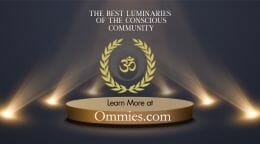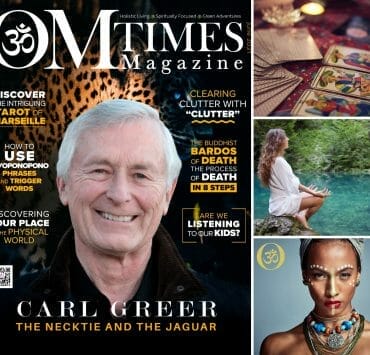Carl Greer: The Necktie and the Jaguar

Carl Greer: Theoretically, it wasn’t a surprise because my mother had died when I was young under mysterious circumstances. I didn’t have much maternal mothering in my life after that except for some relatively limited time with one grandmother. I knew theoretically that I was a little different in that regard. The reaction internally that I had to that affected me in constricting my emotions and expressing those emotions was more than just theoretical understanding. That has to kind of get unearthed through the process of analysis and life layer by layer. It’s painful because it affected how I related to women and how I was fathering my two daughters. So it was a process for me to understand that those events in my life were really affecting me, and later, parts of my life.
Sandra Sedgbeer: You share some incredible stories in the book, and one is about your wife Pat and the visualization you did with her when she had breast cancer.
Carl Greer: This was when I was in my 40s, maybe in the last 1980s. I was interested in Shamanism from reading books by Carlos Castaneda and others, and, coincidentally, I was reading a book by Michael Harner about Shamanism. I was drawn to some of the practices, and I got some drumming and didgeridoo tapes and a crystal, and I started to journey on my own. Around the same time, Pat had a lumpectomy, radiation, and chemo for breast cancer, and we were on a trip in the Sedona area when the wound on her breast started to ooze pus and blood. I’d been doing some of these practices, and I just got an instinct that maybe I could do some healing work. I had this image of me sitting under a tree with a crystal, a woman in a lagoon in a waterfall with a crystal, and then me in Sedona with a crystal, and those crystals all linked up. I used that energy with visualizations that Pat and I had to heal what was happening with the wound on her breast. After a relatively short period–less than an hour–the wound healed over. There was no more bleeding and no more pus, and it was a compelling experience for Pat and me. After that, she had another biopsy, and they said that cancer had come back. Once again, we did some work, and we asked the surgeon who was going to do the frozen C-Section not to do the mastectomy without talking to me first. As Pat was under anesthesia, he kept coming out to me. He took several C-sections, and could not find any cancer, so she did not have the mastectomy. That was many years ago, and the breast cancer has not returned.
Sandra Sedgbeer: Was that a huge surprise to you?
Carl Greer: Yes, it was, but I was guided to do it. And as I got into the Shamanic world subsequently to that, I learned that things like that…just happen. I’m always in awe of the vastness of the world and the energies in which we interact.
Sandra Sedgbeer: When you look back on the life you led before you became a psychologist when you were President of the oil company, I mean, I would imagine you never even dreamed that you would one day do things like that.
Carl Greer: Absolutely. That was not in my awareness or consciousness.
Sandra Sedgbeer: When I look at your story, I see a wonderful roadmap; almost as if somebody said, ‘Right, I’m going to do down there and create a very successful business and wealth, and then have the freedom to follow my path and complete my mission, and then use that wealth for tremendous good. Which is just what you’re doing with your philanthropic work.
Carl Greer: I feel very blessed to have been able to have done that. I was called to share what I had accumulated and try to give as much back as I can while I’m alive and set up processes while I’m no longer around to have it continued to be used for the purposes that I want. I feel that to whom much is given, much is required, and I’m trying, in the charities I’m involved with, to help those who’ve gotten the wrong end of the societal or economic, or cultural stick. I’m trying to help even the playing field for them as much as possible, and it feels good to do that. I feel energized even past my 80 years to spend time doing those things.
Sandra Sedgbeer: In chapter 12, The Jaguar’s Call, you share how you started playing in the fields of possibilities. What prompted that call for you?
Carl Greer: As a young man, I was interested in Native Americans and trappers in the West and that lifestyle. As a man in my 30s, I read books by Castaneda and others about medicine, men, and women, so I was interested. And then, I read Michael Harner’s book and experimented with certain journey practices, so I had that as part of my psyche from a relatively young age. But I hadn’t done anything formally with it until I was almost 60 when I read Alberto Villoldo’s Shaman, Healer, Sage, which my wife had given me when we were on vacation in the Caribbean. I found myself outside in nature, having different kinds of experiences than I’d had for many years. Things seemed more alive and my emotions more immersive, and I continued to think about Alberto’s book and went to some of his training. I completed the basic training, then the advanced training, and became a teacher on his staff. That became a significant part of my life relatively late in my life and has since been a vital part of my spiritual path and evolution.
Sandra Sedgbeer: In The Necktie and the Jaguar, you write about powerful images in unseen worlds. Can you tell us about some of your experiences?
Carl Greer: One of the ideas of Shamanism, which is also somewhat akin to Jungian ideas and work, is that we have our conscious ego, we have a personal unconscious which we repress things in, and we talked earlier about the shadow that may be there as well. The Jungians say there’s a collective unconscious. Shamans may say there’s a transpersonal reality that surrounds and influences us. Shamans may have more manifestations of animal energies, for example, where Jungians might talk about archetypes and Zeus or Athena or Terra. Still, it’s all personifications of energies that influence how we think, act, and feel. So Shamans would get into an altered state, perhaps through drumming or rattling, and then they would travel to those realms for insights, information, and maybe energy, and bring it back to their every day and hope they can make changes in their everyday life. It is similar to what Jungians would try to do, too, working in the unconscious to make changes in our daily lives. So, those experiences were available to me through dreamwork, through Shamanic journeys, and in some cases using sacred plants, and they gave me insights into realms that I hadn’t had access to before that were sources of energy and change for me.
Sandra Sedgbeer: You called that particular chapter, The Jaguar’s Call. What is the significance of the Jaguar in Shamanism?
Carl Greer: There are many schools and types of Shamanism. I’ve been initiated in various kinds of South American Shamanism, primarily in the Andes and Peru. In one of those traditions, the Jaguar is an animal of the West that can travel between death and life, conscious and the unconscious, and in the literal world in water. It can climb, it can be on the land, so it can travel different places, but it also helps eat up the heavy energy of the general. It eats a lot of animals, and it cleanses and kills so that new life can emerge. So the Jaguar has metaphorical as well as actual meaning. For me, it has to do with the mysteries of life and those linkages between life and death, conscious and unconscious.
Sandra Sedgbeer: You wrote that the Shamanic work of the West associated with the Jaguar is the work of letting go of the fear of death. Why is it so important to let go of the fear of death?
Carl Greer: I think that many do not have a relationship with death, to the energy of death. We’re so afraid of dying that sometimes it’s hard to look forward. So, if we can develop a relationship with death and say it’s energy like all other energies, and things have to die in their own time, you don’t want to do it prematurely or wait too long, and that’s just a timing thing. And you realize sometimes things have to die for new life to take hold, so part of Shamanic work, and part of the work I’ve done, is to try to give myself and people I’ve worked with a new relationship to death, that death can be an ally. Death as an ally helps me live more fully and less robotically, so that’s how I thought about the death energy.
Sandra Sedgbeer: Having taken the time to look back over your life and write your memoir, is there anything you would do differently? Any decision you would undo, or experience would change knowing what you know now, or do you feel that it all worked out perfectly?
Carl Greer: I think the things I did in the sequence were probably the best I could do at the time, but the way I did them, I wish I would have a few things differently. I was more impatient than I needed to be. I was more ruled by the clock trying to crowd things into my life that I wish I hadn’t in hindsight. In that vein, I wish I had taken more time to be a good listener, just to be present instead of just trying to get things done on a timeline. So I do have regrets in terms of how I did certain things, but not necessarily so much in actual chapters of my life.
Continue to Page 3 of the Interview with Carl Greer
A veteran broadcaster, author, and media consultant, Sandie Sedgbeer brings her incisive interviewing style to a brand new series of radio programs, What Is Going OM on OMTimes Radio, showcasing the world’s leading thinkers, scientists, authors, educators and parenting experts whose ideas are at the cutting edge. A professional journalist who cut her teeth in the ultra-competitive world of British newspapers and magazines, Sandie has interviewed a wide range of personalities from authors, scientists, celebrities, spiritual teachers, and politicians.





